ChatGPT and Its Impact on SEO
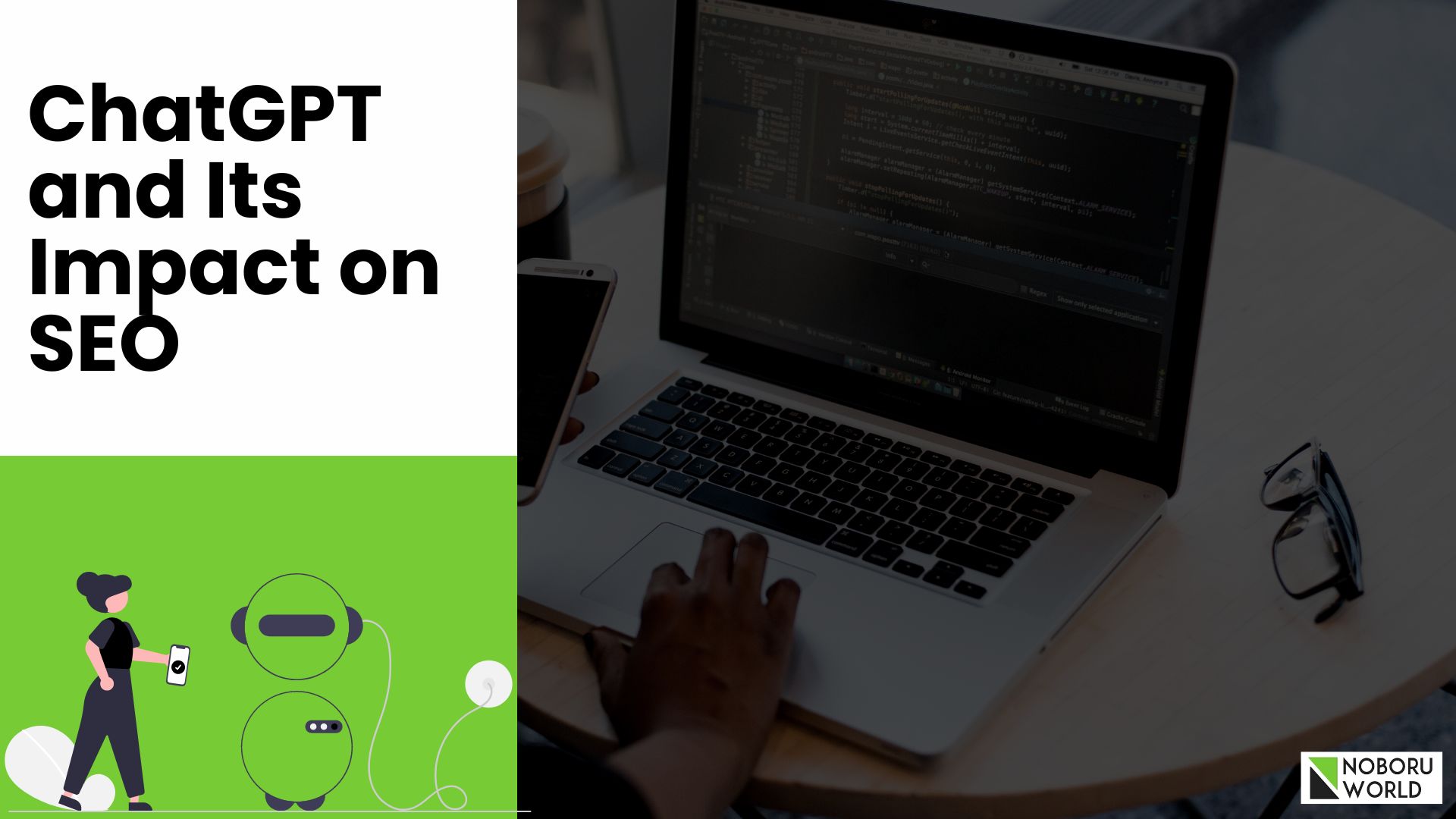
2022 spoke of the obliterated attention span of the readers when brands spoke of content marketing, And just that companies were getting uptight with their content strategy to include infographics, videos, visuals and effectively-written content, we now have chatGPT.
For now, reports state there were 13 million users of ChatGPT per day last month. The language generative model has set a record for the fastest-growing user base. Whopping! Is it? If this impresses you, let us read more about it.
What is chatGPT and how it impacts SEO is what you will get to read next in the article.
What is ChatGPT?
ChatGPT is a conversational artificial intelligence language model developed by OpenAI. It is an advanced version of GPT-3 (Generative Pretrained Transformer 3) that has been specifically trained for human-like text generation and conversation.
ChatGPT utilizes deep learning algorithms to generate responses to user inputs, allowing it to understand the context and provide coherent and informative answers. It can engage in many tasks, such as question-answering, conversation, and text generation.
- ChatGPT is a significant language model developed by OpenAI.
- It incorporates another large language model which is called InstructGPT. The larger model is trained to take directions from humans and long-form answers to complex questions.
- It uses a transformer-based architecture to generate human-like text responses.
- The model is trained on a massive amount of text data to predict the next word in a sequence based on the previous terms in the input.
- The input is processed through several layers of neural networks, including an embedding layer, multiple transformer blocks, and a linear layer.
- The final linear layer generates a probability distribution over the vocabulary for each token in the output sequence.
- The model selects the most likely next word and appends it to the input sequence to generate a response.
- The generated response is then returned to the user as the final output.
Brief History of ChatGPT
| Year | Model | Description |
|---|---|---|
| 2018 | GPT-1 | First introduction of GPT by OpenAI, a significant step forward in NLP and language modeling. |
| 2019 | GPT-2 | Improvement over GPT-1, with larger model size and improved training data. |
| 2020 | GPT-3 | Major leap forward in language generation and understanding, with larger model size and more diverse training data. |
| 2023 | ChatGPT | Derivative of GPT-3, specifically designed for chat and conversational AI applications. Fine-tuned to improve conversational abilities. |
If the capacity of the software is so vast, can it take care of the SEO because Google algorithms remain the same so far as the factors of ranking are concerned.
In response to instructions, ChatGPT can produce articles, essays, jokes, and even poetry. In late November, OpenAI, a privately held business supported by Microsoft Corp (MSFT.O), made it freely accessible to everyone.
How Does ChatGPT Work?
ChatGPT is a language model developed by OpenAI that uses a transformer-based architecture to generate human-like text responses. The model is trained on a large corpus of text data to predict the next word in a sequence based on the previous terms in the input.

The Process:
- When a user inputs a query, the model takes the input and passes it through several layers of neural networks, including an embedding layer, multiple transformer blocks, and a linear layer.
- The embedding layer maps the input tokens to dense vectors, which are then processed by the transformer blocks to capture long-range dependencies in the data.
- The final linear layer generates a probability distribution over the vocabulary for each token in the output sequence.
- The model selects the most likely next word based on the probabilities and appends it to the input sequence to generate a response.
- This process is repeated until the model reaches a specified length or generates a unique end-of-sequence token.
- The generated response is then returned to the user as the final output.
ChatGPT uses a combination of deep learning techniques to generate text responses based on a large amount of training data.
Explanation of GPT-3
GPT-3 (Generative Pretrained Transformer-3) is a language model developed by OpenAI that uses deep learning techniques to generate human-like text. Yes, it can think like humans.
It is one of the most significant language models available, with over 175 billion parameters, making it capable of performing a wide range of language tasks such as text completion, translation, and summarization.
GPT-3 is a transformer-based architecture, which means it uses self-attention mechanisms to process the input data and capture long-range dependencies in the language. The model is trained on massive text data, allowing it to generate highly sophisticated and contextually appropriate responses to various prompts.
One of the critical strengths of GPT-3 is its ability to transfer its knowledge to new and unseen tasks through fine-tuning. With a small amount of task-specific training data, GPT-3 can be adapted to perform new language tasks such as question answering, sentiment analysis, and text classification.
ChatGPT’s Impact on SEO
ChatGPT and other language models like it have the potential to impact search engine optimization (SEO) in several ways. It will make associated jobs of SEO such as organizing keywords, determining content outline, finding frequently asked questions, sorting data and creating meta descriptions.
But the use of AI-backed language generators can have some potential impacts. Let us read that.
Content generation:
ChatGPT and similar models can generate high-quality content quickly and efficiently, potentially reducing the time and resources required for content creation. This could be particularly beneficial for businesses and websites that need to produce large amounts of content regularly. Creating content through ChatGPT helps in the following ways:
- Speed and Efficiency: ChatGPT can generate high-quality content quickly and efficiently, reducing the time and resources required for content creation. This can be particularly beneficial for businesses and websites that need to produce large amounts of content regularly. So, if the efficiency of the content improves, the writers can think of optimizing the content from an SEO point-of-view.
- Cost savings: By automating the content creation process, businesses can save on hiring writers, editors, and other professionals to create the content. If the efficiency of the writer improves, the companies can save costs to appoint new writers. The existing resources can be deployed to enhance the quality and SEO optimize the content.
- Consistency: ChatGPT can generate content that is consistent in terms of tone, style, and quality, helping to maintain a consistent brand image and message. For ranking and SEO optimization, consistency in content is an important factor that can be resolved with ChatGPT.
- Customization: ChatGPT can be fine-tuned to generate content customized for a specific brand, audience, or purpose, allowing businesses to create highly targeted and relevant content.
- Improved language understanding: As language models like ChatGPT continue to improve, they can offer a better understanding of language, helping to create content that is more accurate, natural, and effective.
Keyword optimization:
ChatGPT could be used to generate keyword-rich content optimized for search engines, improving the visibility and ranking of a website in search results. ChatGPT can be used to generate content that is optimized for search engines through the use of keywords. Here’s how it can work:
- Keyword research: The first step is identifying the target keywords for which the content should be optimized. This typically involves researching keywords that are relevant to the topic, have a high search volume, and are not too competitive. ChatGPT cannot search the keywords and hence human intervention is important at this step. Humans have to find the keywords and then enter in the AI language model.
- Keyword input: The target keywords are then used as input to ChatGPT, either as a prompt or as part of the content to be generated.
- Content generation: ChatGPT generates content based on the input, including the target keywords. The model uses its vast training data and language understanding to develop relevant and optimized content for the target keywords.
- Keyword density: The generated content can be edited and reviewed to ensure that the target keywords are used in a way that is both relevant and appropriate for the content and audience. This may involve adjusting the keyword density, which is the proportion of keywords to non-keywords in the range.
- Final review: The final content is reviewed by a human editor to ensure that it is high quality and appropriate for the intended audience. This may involve further editing to refine the content and improve its readability and effectiveness.
Chatbots:
ChatGPT could power chatbots, allowing businesses to provide quick and accurate responses to customer inquiries through their website or mobile app. This could improve the user experience and increase the engagement and conversion rates for the website.
Using a chatbot powered by a language model like ChatGPT can have several positive impacts on search engine optimization (SEO):
- Improved user experience: Chatbots can provide quick and accurate responses to customer inquiries, improving the overall user experience and keeping visitors engaged with a website for longer. This can increase the time on site and reduce bounce rates, both critical ranking factors for search engines.
- Increased engagement: Chatbots can provide a more conversational and interactive experience, potentially increasing user engagement and boosting conversion rates. This can positively impact the website’s overall performance and visibility in search results.
- Improved keyword targeting: Chatbots powered by language models like ChatGPT can be trained to understand specific keywords and phrases, allowing them to provide more relevant and accurate responses. This can improve the relevance and effectiveness of the website’s content, potentially increasing its ranking in search results.
- Increased content generation: Chatbots can also generate additional content, such as answers to frequently asked questions or product descriptions. This can improve the website’s relevance and authority, potentially increasing its ranking in search results.
While chatbots powered by language models like ChatGPT can positively impact SEO, it’s important to remember that they are just one part of a larger SEO strategy. Other factors, such as website structure, backlinks, and user engagement, also significantly improve a website’s visibility and ranking in search results.
Improved language understanding:
As language models like ChatGPT continue to improve, they may enable search engines to better understand the meaning and context of the content on a website, potentially improving the relevance and accuracy of search results.
It is important to note that search engines like Google continually update their algorithms to ensure that the results are high quality and relevant to the user’s query. Therefore, the impact of language models on SEO may change as search engines evolve, and businesses and websites must stay informed and adapt to stay ahead of the curve.
This is how improved language understanding of ChatGPT helps in SEO:
- High-quality content generation: ChatGPT can be used to generate high-quality, keyword-rich content that is optimized for search engines. Improved language understanding can help to ensure that this content is more relevant, accurate, and effective, potentially increasing the website’s ranking in search results.
- Accurate response: ChatGPT can be used to power chatbots, which can provide quick and accurate responses to customer inquiries. Improved language understanding can help to ensure that these responses are more relevant and effective, potentially increasing engagement and conversion rates.
- Improved search results: As search engines continue to rely on language models like ChatGPT to better understand the meaning and context of the content on a website, improved language understanding can help to ensure that search results are more relevant and accurate. This can improve the user experience and increase engagement, which can have a positive impact on the website’s ranking in search results.
ChatGPT Use Cases:
Here are some use cases studies to explain the relevance of ChatGPT from different aspects.
ChatGPT in Customer Service
ChatGPT can be used in customer service to provide quick and accurate responses to customer inquiries in a conversational manner. Here’s how it works:
- Input: The customer inputs questions or requests into a chat interface, such as a website or mobile app.
- Processing: The customer service chatbot processes the input, typically passing it to the ChatGPT language model, which generates a response.
- Response generation: ChatGPT generates a response based on the input, using its understanding of language and vast training data to provide a relevant and accurate answer.
- Output: The chatbot outputs the response to the customer by displaying it in the chat interface or by sending it as a message.
Using ChatGPT in customer service, companies can provide quick and accurate responses to customer inquiries, improving the overall customer experience and reducing response times. Additionally, chatbots powered by language models like ChatGPT can be trained to understand the specific context and needs of a particular business or industry, allowing them to provide more relevant and effective responses. This can increase customer satisfaction and reduce the number of customer service inquiries that need to be handled by human agents.
ChatGPT in Content Generation
ChatGPT can be used in content generation to automatically generate high-quality, relevant content in various forms, including articles, blog posts, product descriptions, and more. Here’s how it works:
- Input: The user inputs a topic or keyword related to the desired content and any additional constraints or guidelines.
- Processing: ChatGPT processes the input, using its understanding of language and vast training data to generate relevant and accurate content.
- Content generation: ChatGPT generates the content, considering the input and any constraints or guidelines the user provides.
- Output: The generated content is outputted in the desired format, such as a text document or HTML page.
Using ChatGPT in content generation, companies can quickly and easily generate high-quality, relevant content optimized for search engines. This can increase engagement and improve search engine ranking, potentially driving more traffic to the website. Additionally, generating content in real time can help keep websites and other online properties up-to-date with fresh, relevant content, improving the overall user experience.
Keyword Research in ChatGPT
ChatGPT can be used in keyword research to help identify the most relevant and effective keywords for a particular business or website. Here’s how it works:
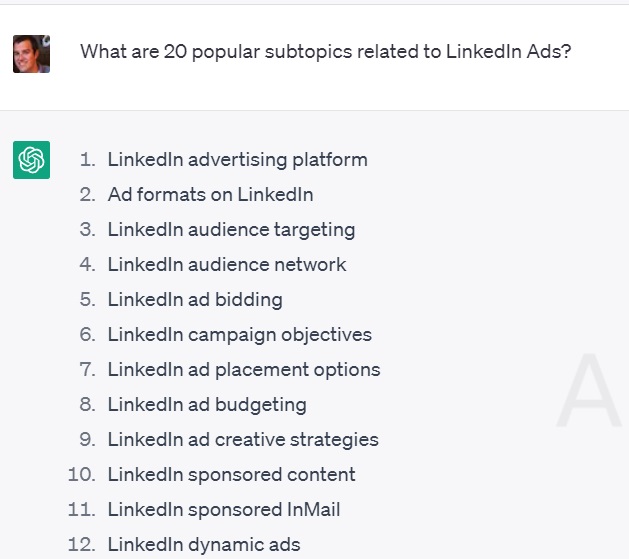
- Input: The user inputs a topic or theme related to the desired keywords and any additional constraints or guidelines.
- Processing: ChatGPT processes the input, using its language understanding and vast training data to generate a list of relevant keywords.
- Keyword generation: ChatGPT generates a list of keywords relevant to the input and any constraints or guidelines the user provides.
- Output: The generated list of keywords is outputted in the desired format, such as a text document or spreadsheet.
The AI tool can also be used to refine keywords for “content marketing” which will help to rank easily.
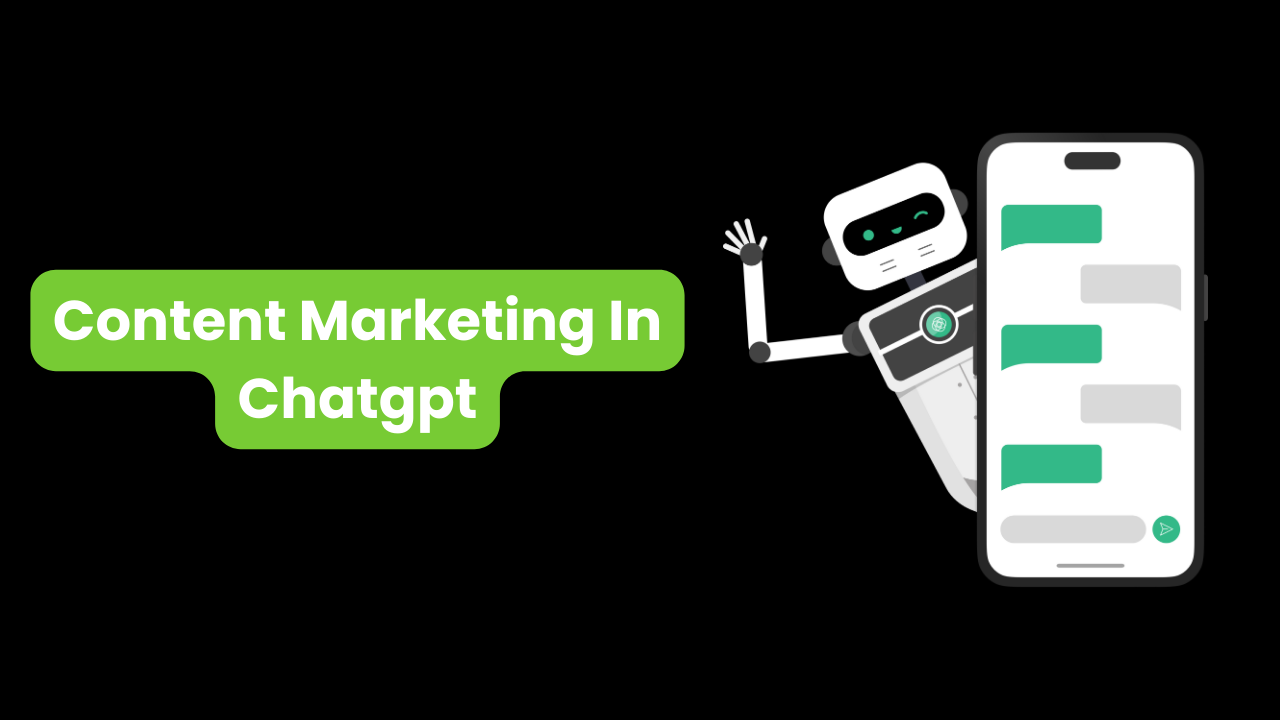
Using ChatGPT in keyword research, companies can quickly and easily identify the most relevant and effective keywords for their website or business. This helps ensure that content is optimized for search engines and that potential customers discover the website more easily.
Additionally, ChatGPT’s ability to understand language and generate relevant keywords in real-time can help to keep keyword research up-to-date and relevant, even as search algorithms and consumer behavior evolve.
Content Outline from ChatGPT
ChatGPT can help create a content outline by suggesting topics and subtopics based on a given prompt or topic. It can also generate text for each section of the outline, providing a starting point for further editing and refinement. This can save time and effort in content creation, allowing content creators to focus on other aspects of their work.
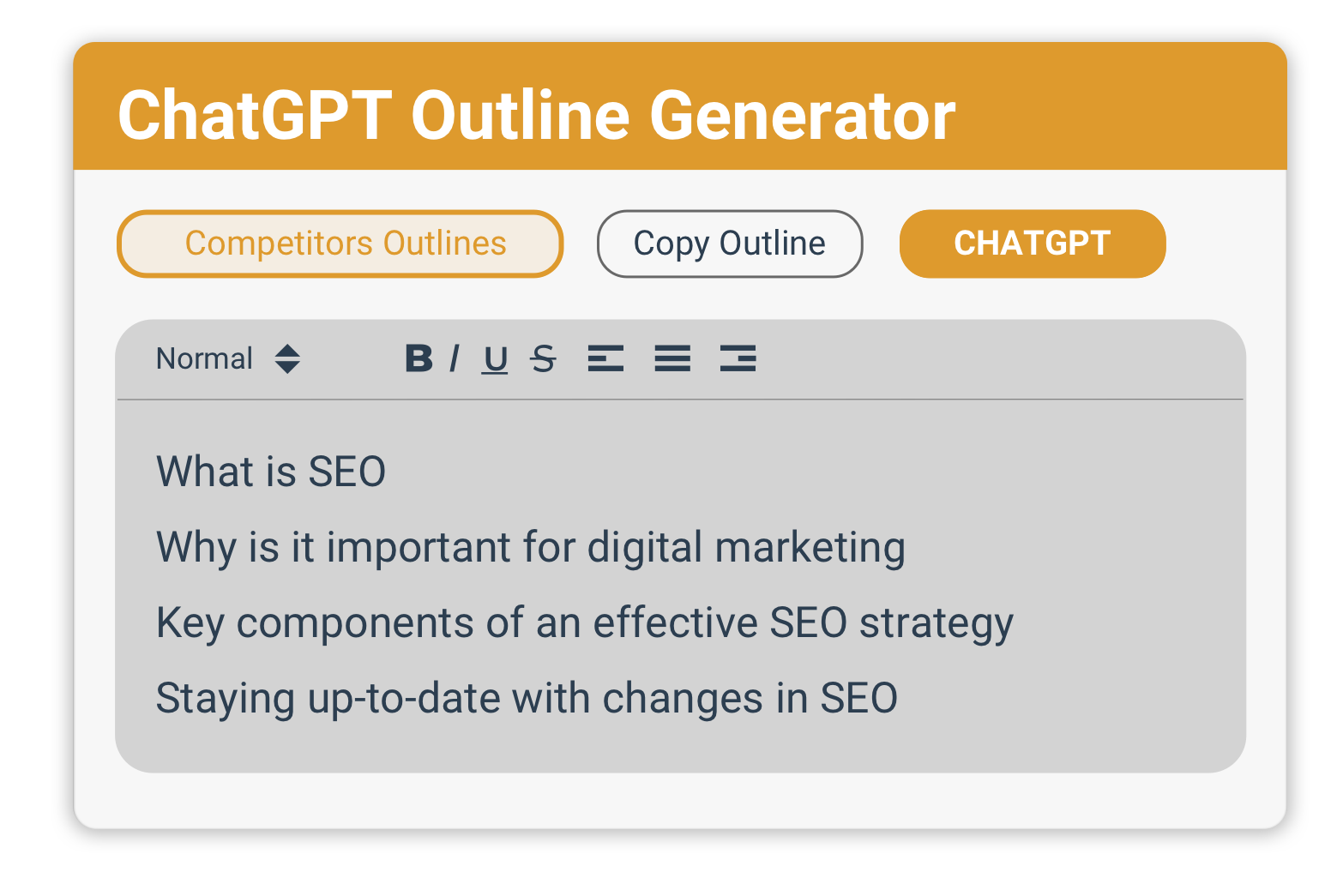
Frequently Asked Questions from ChatGPT
ChatGPT can help generate FAQs by providing quick and accurate responses to commonly asked questions. This can be done by training the model on a large dataset of question-answer pairs, or by using the model’s built-in ability to generate answers based on a prompt.
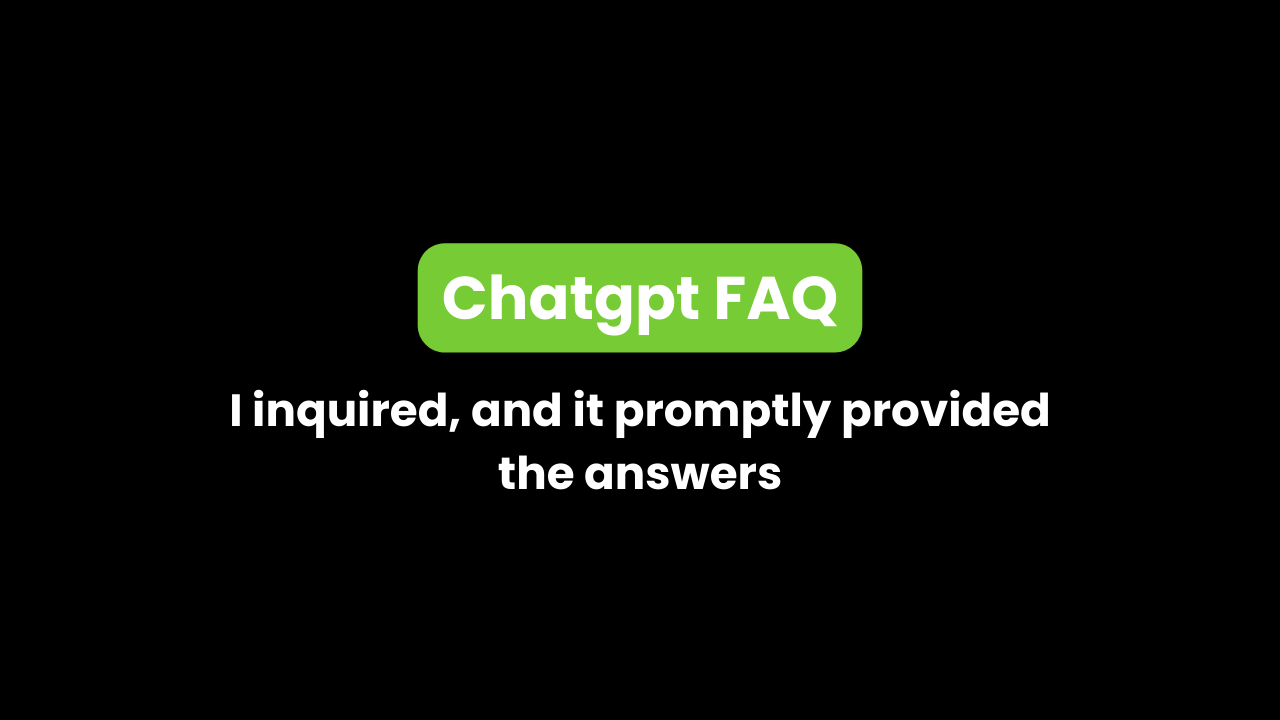
The output can then be refined and edited to ensure that it is clear, concise, and accurate. By using ChatGPT for FAQ generation, businesses can save time and effort in the content creation process and provide helpful answers to their customers more quickly and efficiently.
Article Headlines from ChatGPT
ChatGPT can generate catchy headlines for a blog by using its advanced language generation capabilities. To do this, you can provide the model with a prompt that includes the topic or central idea of the blog post, and the model will generate headlines based on this information.
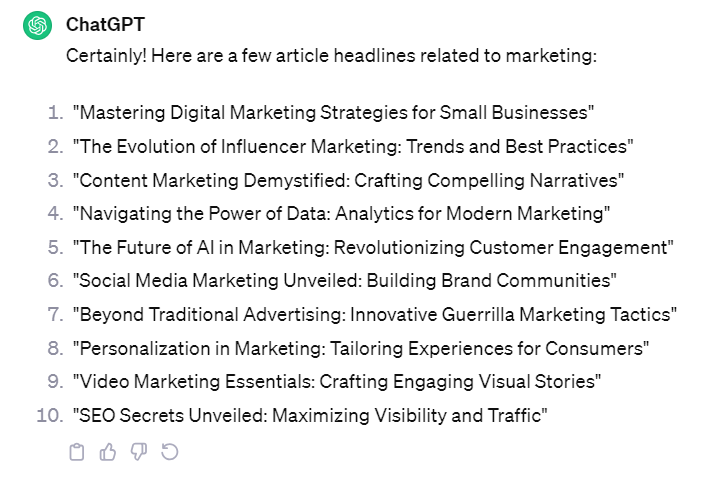
The output can then be edited and refined to ensure that it is clear, concise, and attention-grabbing. Using ChatGPT for headline generation, bloggers can save time and effort in the content creation process and generate headlines that effectively communicate the main idea of their blog post.
ChatGPT for Templates for Guest Posting
The smart AI-backed content generative model will help prepare templates for guest posting. You can increase business efficiency and lead outreach in less time than expected.
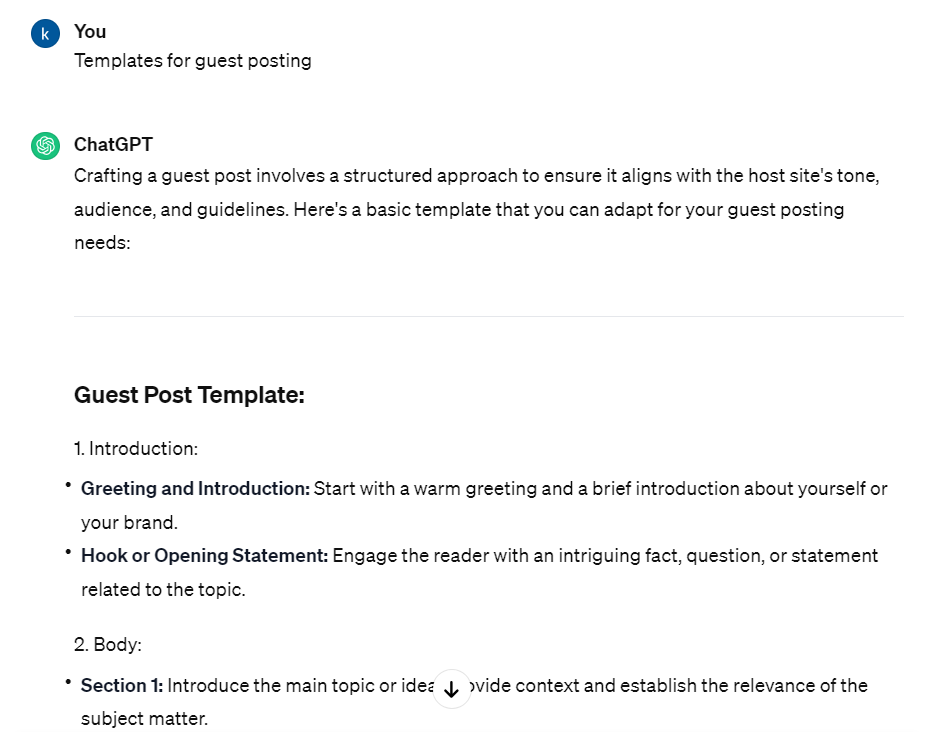
ChatGPT for Generating Semantically Relevant Topics
ChatGPT can give semantically relevant topics, saving your time and increasing the efficiency of the organisation. You can save time to research topics.
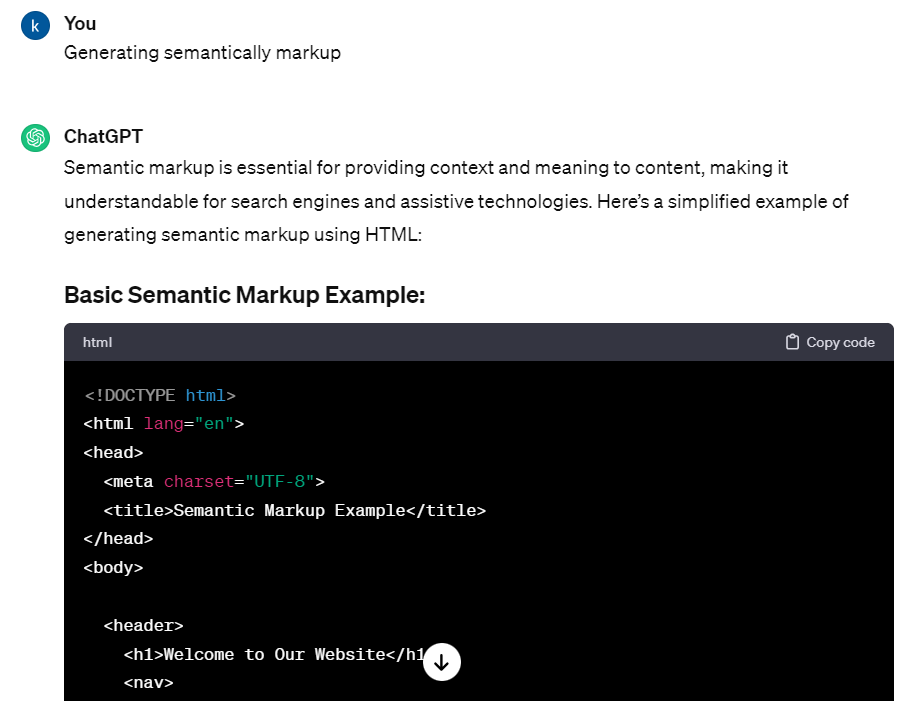
Create Schema Markup To Update Your Website Code.
Creating schema markup with ChatGPT can help organizations by providing additional information to search engines; schema markup can help improve the visibility and ranking of a website in search results, resulting in increased traffic and engagement.
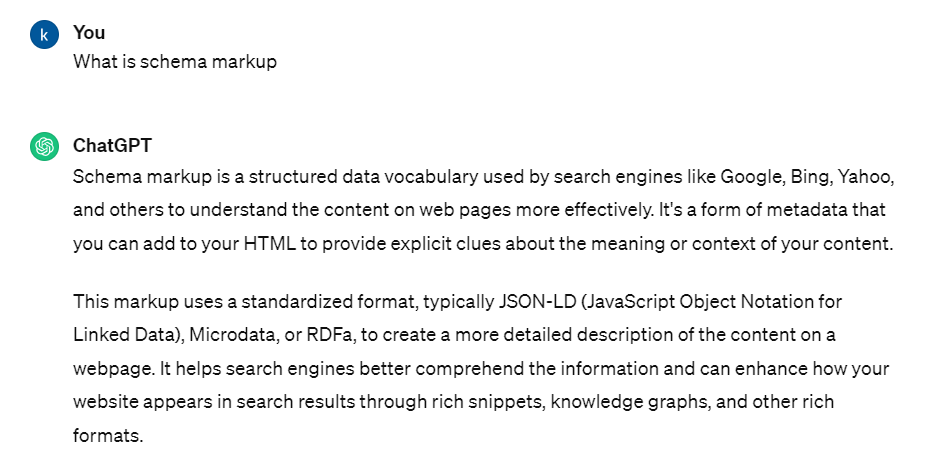
Schema markup can display rich snippets in search results, such as star ratings, images, and reviews. This can make it easier for users to find the information they’re looking for and increase click-through rates. Schema markup can help ensure that the information displayed in search results is accurate and up-to-date. This can build trust with users and improve the overall reputation of a website.
Chatgpt Can Summarise Article For Social Media Promotion
ChatGPT is capable of summarising articles for promotion on social media platforms.
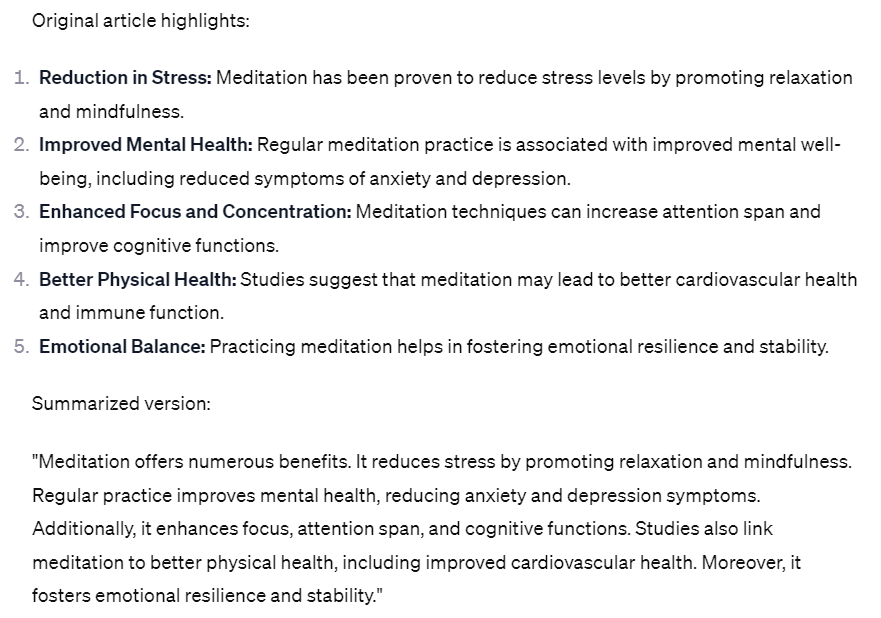
Chatgpt Has the Capacity To Write Full Article
The tool is powerful to write full-length articles for readers. So when there is bulk work or when you want to nurture the article with data, you can use ChatGPT to make the process real quick for you.
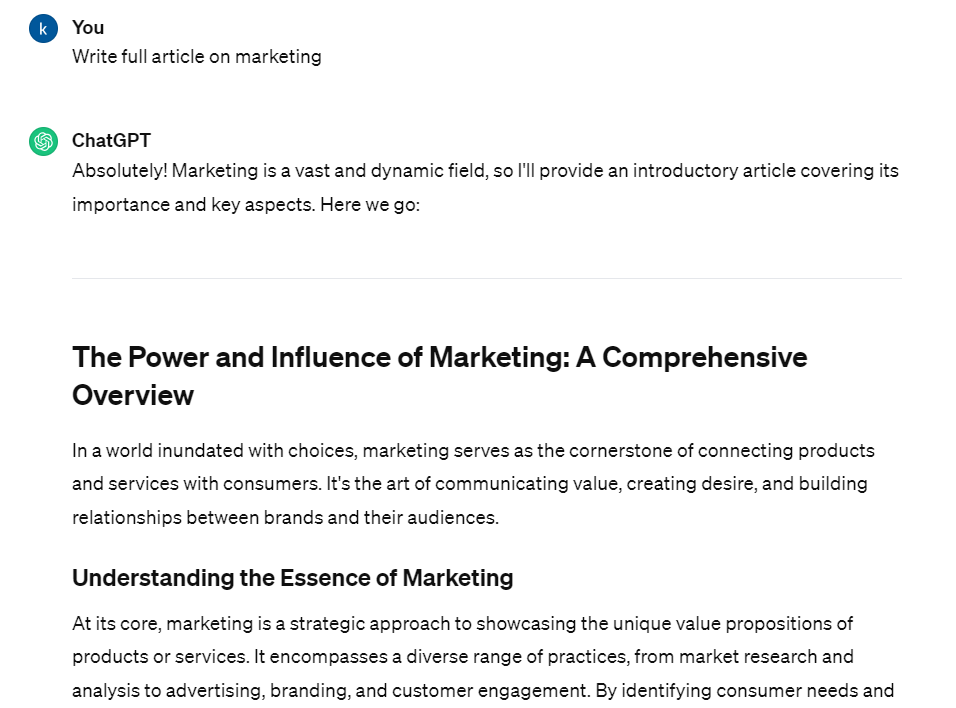
Translate the Article into Another Language with ChatGPT
The tool has the power to translate the article into any language you want. It changed the social media post generated for LinkedIn to Hindi.
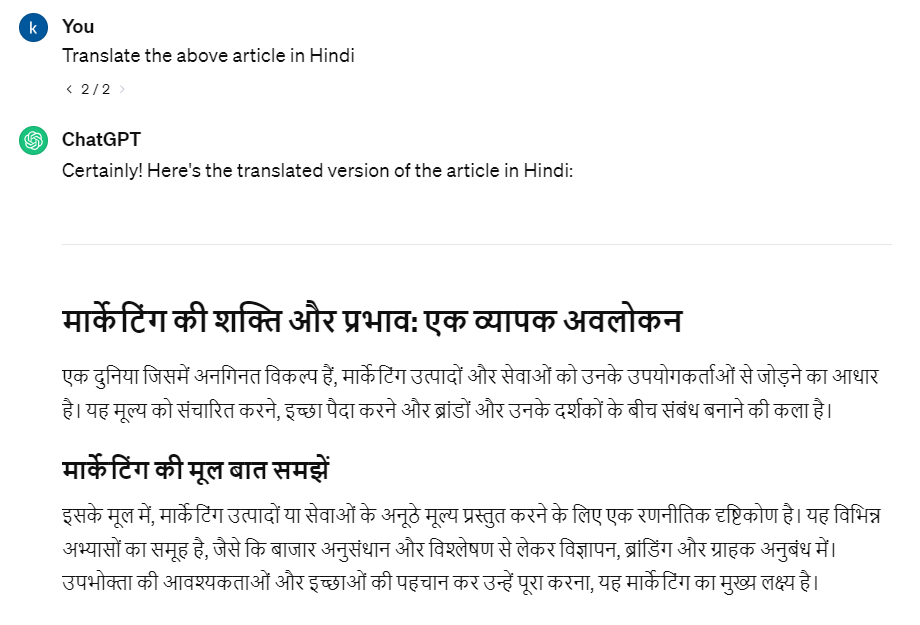
Find Missing Topics From Existing Text
The content tool can give you the list of best semantically long-tailed keywords that can be used in the article.
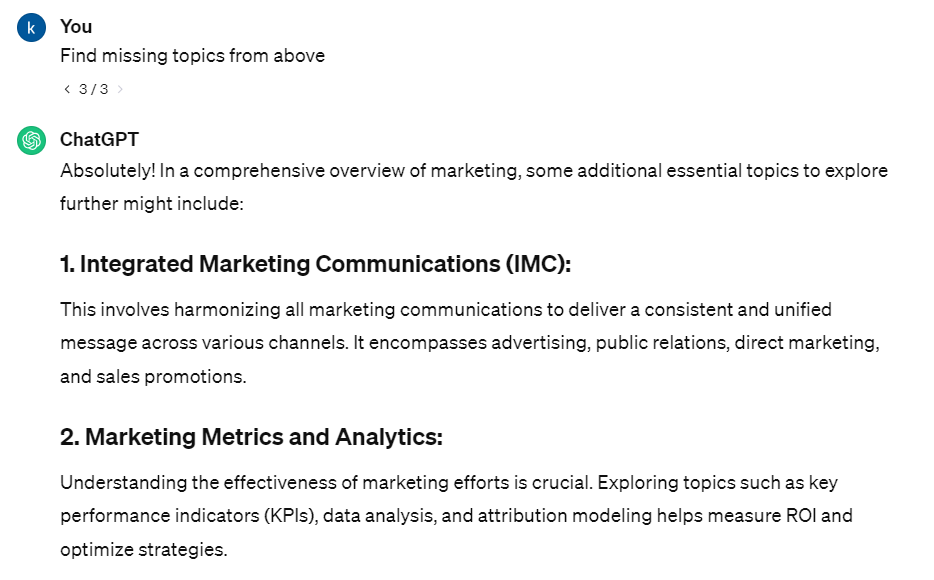
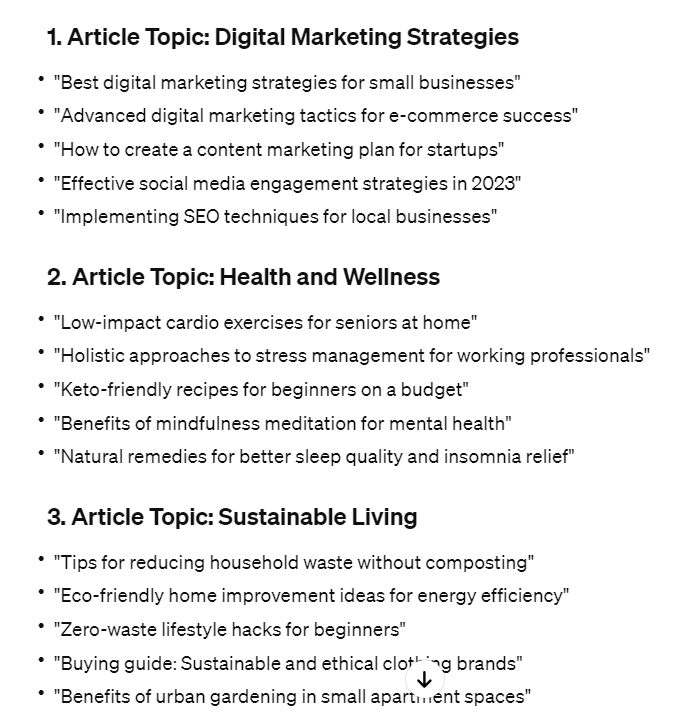
Create Product Description Fast
Make your work smarter and faster with ChatGPT. The system can help you create product descriptions that are precise and good to use.

Create Content Calendar
Be smart to create the content calendar to meet and manage the monthly content target.
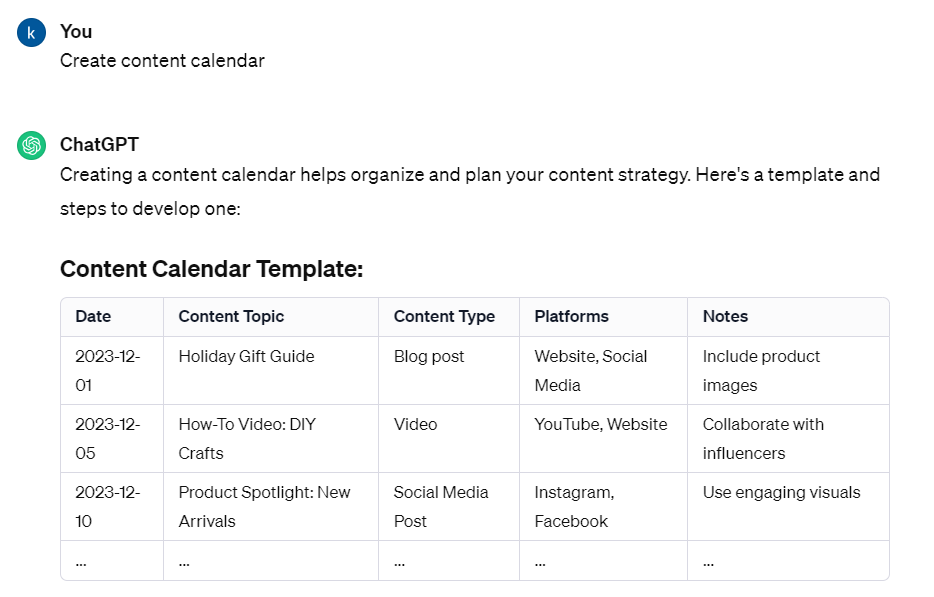
Create Meta Tags
Meta tags are an essential part of search engine optimization (SEO) and play a crucial role in helping search engines understand the content of a website and its relevance to users. By creating meta tags with ChatGPT, website owners and content creators can ensure that their meta information accurately reflects the content and purpose of the website.
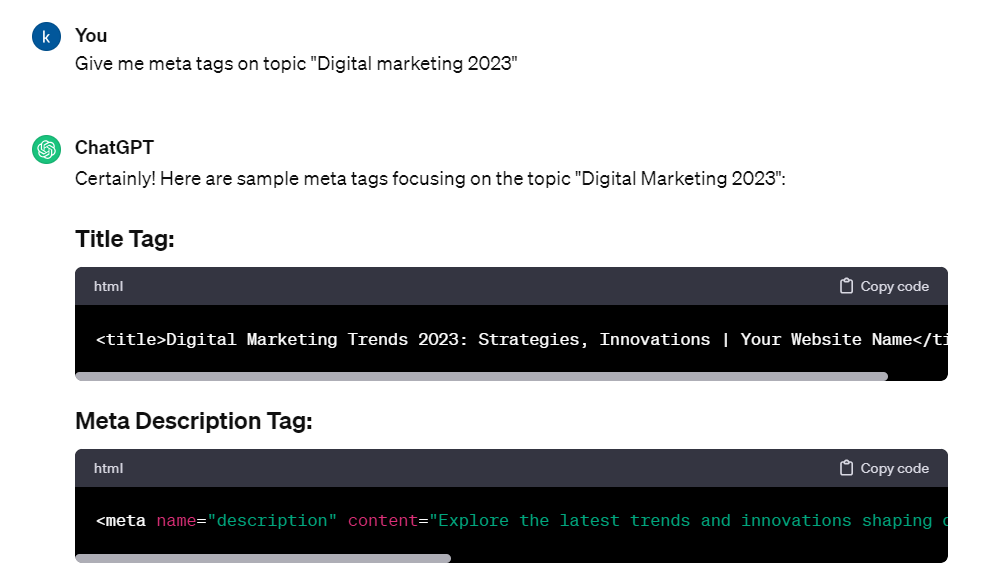
This can help improve the website’s visibility in search results and attract more relevant traffic.
In addition, creating meta tags with ChatGPT is convenient and time-efficient as it eliminates the need for manual research and copywriting. By providing relevant information, ChatGPT can generate meta tags quickly and accurately, saving website owners and content creators valuable time and resources.
Proofread the Content
Proofreading content with ChatGPT can be a valuable tool for ensuring written content’s accuracy, clarity, and quality. Using natural language processing and machine learning, ChatGPT can quickly identify and suggest corrections for grammatical errors, spelling mistakes, and awkward phrasing, making it an efficient and effective way to improve the overall readability and impact of the content.
Proofreading with ChatGPT can also help with consistency and coherence and improve the content’s tone and style. This is particularly useful for businesses and individuals who need to produce a large volume of written content quickly or for those who lack the resources or expertise to perform manual proofreading.
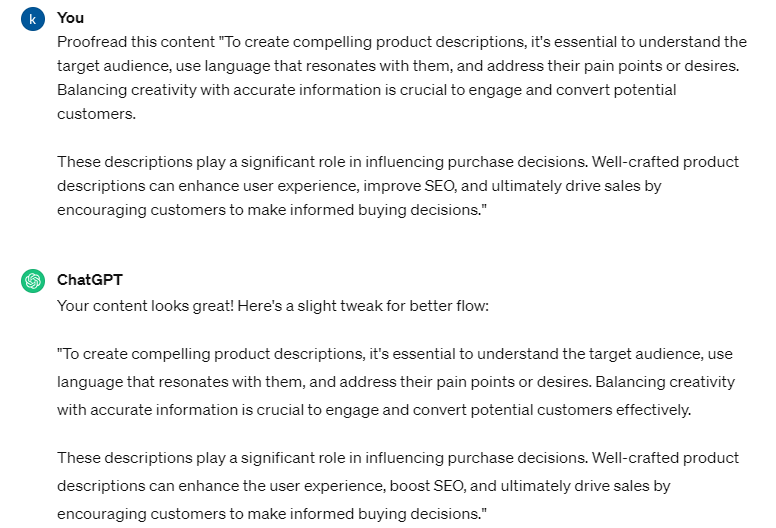
Provide Word Count For Text
Write and count with ChatGPT. Word count with ChatGPT is a convenient and efficient way to quickly determine the number of words in a text.
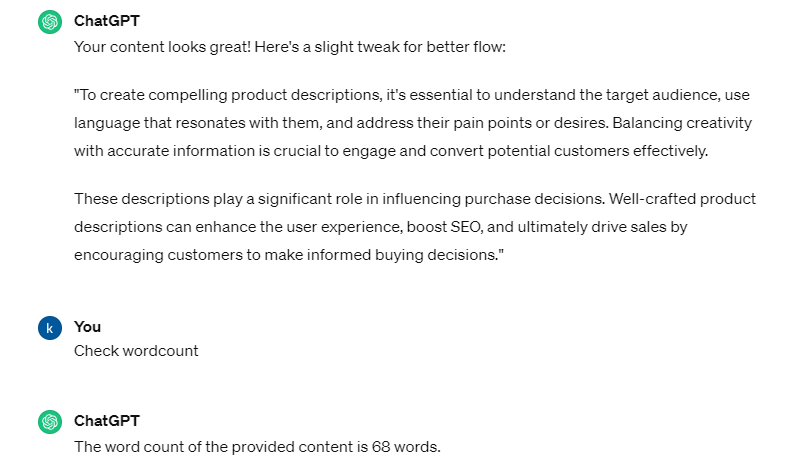
This can be useful for a variety of purposes, including:
- Content creation: Word count can help creators determine if a piece of writing meets the required length for a specific platform, such as a blog post, article, or social media post.
- Writing improvement: By knowing the word count, writers can track their progress and make changes to the length and structure of their paper to better meet their goals.
- Billing and invoicing: For content creators and freelance writers, word count can be used to determine the amount of work completed and accurately invoice clients.
- Statistical analysis: Word count can provide valuable data for analyzing writing patterns, such as the average length of paper, the frequency of certain words, and more.
Keyword Density with ChatGPT
Finding keyword density with ChatGPT can help with search engine optimization (SEO) by ensuring that the content of a website or web page includes the right balance of relevant keywords. Keyword density refers to the number of times a keyword or phrase appears in a piece of content compared to the total number of words.
By using ChatGPT to analyze keyword density, website owners and content creators can:
- Improve search engine visibility: By including the right keywords in the proper density, websites can rank higher in search engine results pages (SERPs), making it easier for potential customers to find them.
- Optimize for user intent: By including relevant keywords, website owners can ensure that their content is aligned with the purpose of their target audience, leading to a better user experience and higher engagement.
- Avoid keyword stuffing: Overuse of keywords can lead to a practice known as “keyword stuffing,” which can result in penalties from search engines and harm the overall quality of the content. ChatGPT can help ensure that keyword density is within an acceptable range and not overused.
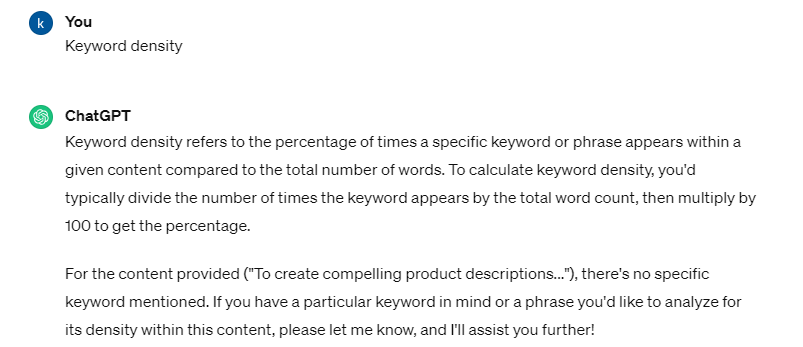
Add Relevant Resources for Content and Study
The AI content tool makes it easy for you to find relevant resources where you can study related topics.
It makes research easy and fast. The readers can see what competitors are doing and how they are performing better.
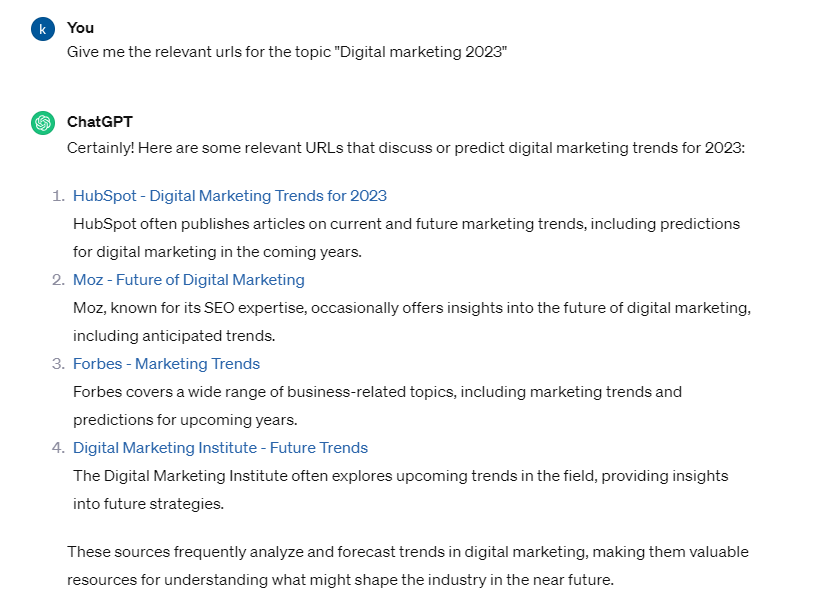
Future of ChatGPT and SEO
The future of ChatGPT and SEO is likely to be characterized by increasingly sophisticated and personalized language models, as well as a greater focus on voice-driven search and natural language processing. Here are a few key trends to watch for:
Improved language understanding:
As language models like ChatGPT continue to evolve, they are likely to become even better at understanding language, context, and user intent. This will enable them to provide more accurate and relevant responses, both in customer service and content generation.
Voice search and natural language processing:
As voice-driven search becomes more prevalent, companies must ensure that their websites and content are optimized for voice search and natural language processing. This may require new strategies for keyword research and content generation, as well as website architecture and navigation changes.
Personalized content and experiences:
As language models become more sophisticated, they will likely be used to personalize the content and experiences offered to users. This may include generating personalized product recommendations, customizing website content based on individual user interests, and more.
Integration with other technologies:
ChatGPT and other language models will likely be integrated with other technologies, such as machine learning and artificial intelligence, to provide even more advanced and personalized experiences.
The future of ChatGPT and SEO is likely marked by continued innovation and greater sophistication in using language models to generate content, respond to customer inquiries, and improve search engine optimization.
Challenges for ChatGPT for SEO
There are several challenges that ChatGPT faces in its application to SEO:
- Relevance:
Ensuring that the content generated by ChatGPT is relevant and valuable to users can be a challenge. The model needs to be trained on a wide range of data and have a good understanding of context and user intent to generate content that meets these criteria.
- Quality:
Generating high-quality content is essential for good SEO, but it can be challenging with automated tools like ChatGPT. There is a risk that the content generated may be of low quality or need to meet the target audience’s needs.
- Keyword optimization:
Optimizing content for search engines requires a good understanding of keywords and search algorithms. While ChatGPT can be trained on data related to SEO, it may only sometimes have the most up-to-date information on these topics.
- Integration with existing processes:
ChatGPT needs to be integrated with existing SEO processes to be effective. This may require changes to how content is generated, reviewed, and optimized for search engines.
- Ethical considerations:
Using ChatGPT and other AI tools for SEO raises ethical concerns, including the potential for creating low-quality or spammy content and the risk of misleading users with inaccurate information.
- Programmed to avoid a set type of content
ChatGPT is programmed to not create content on sexual activity, graphic violence, or any other harmful content.
- Unaware of current data and events
ChatGPT cannot include information on any current events or data. It is programmed with data updated in 2021. So, if the users want their content to rank it is important that you enrich it from other sources.
- ChatGPT requires highly detailed instructions
ChatGPT can produce articles, essays, jokes, and even poetry in response to instructions. In late November, OpenAI, a privately held business supported by Microsoft Corp (MSFT.O), made it freely accessible to everyone.
- Not sure whether ChatGPt content will be identified?
For many years, scientists at Google and other companies have been developing algorithms for accurately identifying content produced by AI.
There are other studies on the subject, but I’ll only cite one from March 2022 that made use of GPT-2 and GPT-3 output. Adversarial Robustness of Neural-Statistical Features in Detection of Generative Transformers is the title of the research study (PDF).
The purpose of the experiment was to determine what kind of analysis was capable of spotting AI-generated content that used techniques that were intended to avoid discovery.
- Invisible Watermarking
The fact that OpenAI researchers have devised cryptographic watermarking to help with content identification produced by OpenAI products like ChatGPT is more intriguing.
A conversation by an OpenAI researcher, which can be found on a video titled Scott Aaronson Talks AI Safety, was recently brought to readers’ attention.
According to the researcher, ethical AI methods like watermarking can develop into industry standards, much like how Robots.txt established a norm for moral crawling.
While ChatGPT can significantly improve SEO, it also faces several significant challenges that need to be addressed to realize its full potential.
Conclusion
ChatGPT, as a language model, has no direct impact on SEO (Search Engine Optimization). However, the content generated by ChatGPT can potentially be used to improve SEO if it is unique, relevant, and high-quality, as these are factors that search engines use to rank websites. Additionally, having chat-based interfaces or chatbots on a website can enhance the user experience, which can also have a positive impact on SEO by reducing bounce rates and increasing the amount of time users spend on the website.





Comments
I wanted to express my gratitude for this helpful post. The information you’ve shared has been instrumental in solving a problem I’ve been facing.
Your post is incredibly helpful! It answered all the questions I had and provided additional insights. I’m grateful for the effort you’ve put into sharing this valuable information.
I wanted to express my gratitude for this well-written and insightful post. It’s evident that you’ve gone above and beyond to deliver valuable information. Thank you for enriching our understanding with your work!
This post has been a great resource for me. It’s well-written and covers the topic comprehensively. Thank you for sharing your knowledge and expertise!
Your post is a goldmine of information! It’s evident that a lot of research and effort went into creating this valuable resource. Great job!
Kudos to you for creating such a great website! The content is top-notch, and your post is no exception. It provided me with the exact information I was looking for. Thank you!
I wanted to express my appreciation for your exceptional work. This post has been incredibly helpful, and I’ve gained a lot of knowledge from it. Thank you for your dedication to producing high-quality content!
Great post! I appreciate the effort you put into explaining the topic in a clear and concise manner. It’s really helpful for someone like me who is new to this subject. Thank you!
Your post is a goldmine of information! It’s evident that a lot of research and effort went into creating this valuable resource. Great job!
I’m really grateful for this post. It’s clear that you’ve put a lot of effort into providing comprehensive information. It has provided me with new insights and a fresh perspective. Your dedication to sharing valuable content is commendable. Thank you for your work!